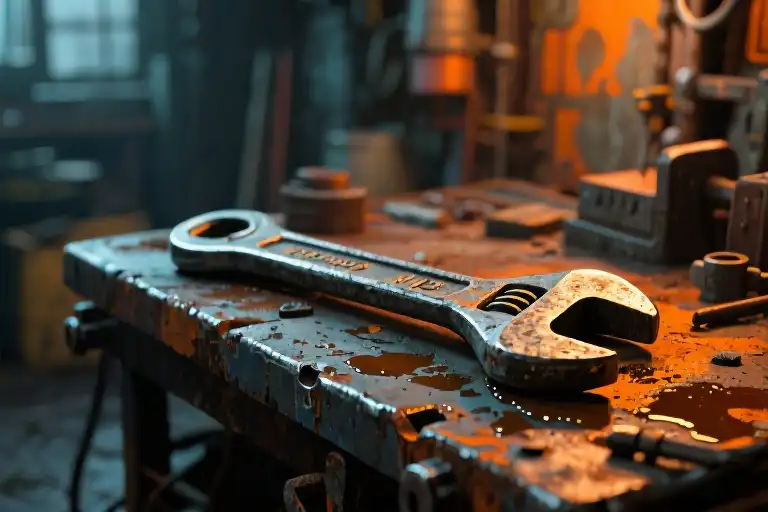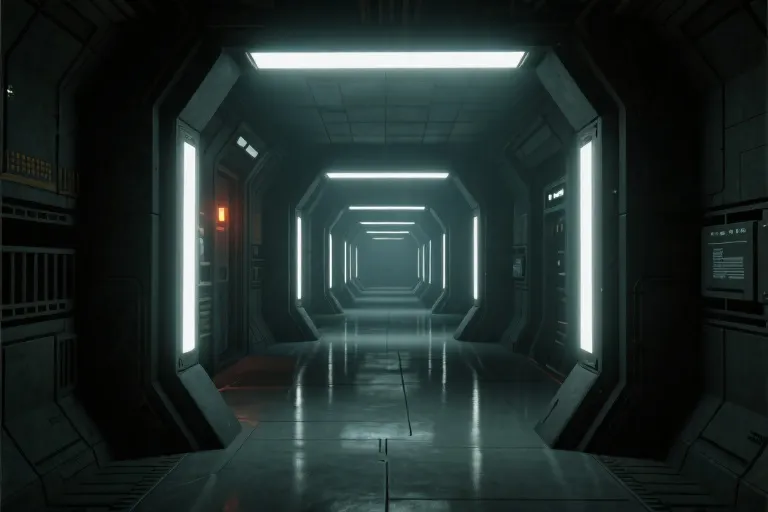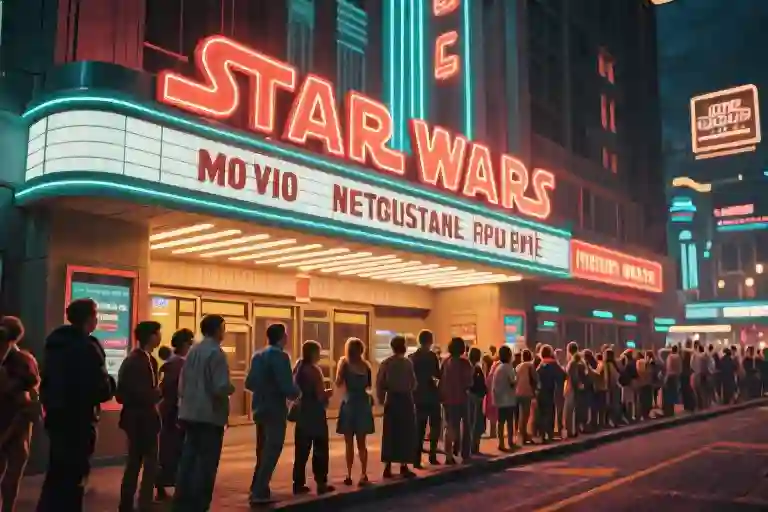“Oh, I’m a rebel. It’s just me against everybody else.” When Arvel Skeen mutters these words in Andor, it doesn’t come with the dramatic swell of John Williams’ score or the ignition of a lightsaber. There’s just the quiet clank of tools in a grimy workshop, the tired sigh of someone who’s been fighting alone too long. And that’s precisely why this Star Wars story hits differently.
For decades, the galaxy far, far away has thrived on cosmic mysticism – Jedi knights channeling the Force, destiny-bound Skywalkers, and planet-destroying superweapons. But Andor plants its boots firmly in the mud of everyday resistance. No chosen ones. No laser sword duels. Just a stolen wrench, a forged ID, and the slow-burning rage of people who’ve been counting every credit under imperial boots.
What makes this series revolutionary isn’t just its grittier tone (though the lack of CGI sheen is refreshing). It’s how Tony Gilroy’s writing team weaponizes mundane details: the way factory workers pass messages through shift changes, how rebellion funds get smuggled in lunch pails, why a simple timekeeping system becomes the empire’s most insidious control mechanism. These aren’t fantasy tropes – they’re tactics ripped from real-world labor movements and anti-colonial struggles.
The genius lies in the inversion. Where traditional Star Wars operatics make oppression feel grand and distant (Death Stars looming over planets), Andor shows tyranny’s petty bureaucracy: the humiliating ID checks, the deliberately broken elevators in worker housing, the imperial officer casually rerouting an entire planet’s water supply during a drought. When Cassian Andor snarls “That’s just what empires do,” it resonates because we’ve seen our own versions – maybe not with TIE fighters, but with predatory loans or suddenly unaffordable insulin.
And here’s the kicker: Disney reportedly spent just $500 million on this 12-episode season – less than half of The Rise of Skywalker’s budget. That financial restraint forced creativity. Instead of green-screen spectacle, we get authentic locations like a repurposed British cement factory doubling as an imperial prison. Rather than relying on legacy characters, the show invests in original personalities like Maarva (Fiona Shaw’s scrappy revolutionary mom) or the brilliantly slimy corporate climber Syril Karn. The result? A 96% Rotten Tomatoes score that shames most big-budget franchise entries.
This is Star Wars stripped down to its rawest, most human core – not a myth about space wizards, but a mirror held up to anyone who’s ever whispered “This isn’t right” during a soul-crushing workday. The rebellion doesn’t begin with heroic speeches here; it starts when someone finally snaps over stolen wages. And isn’t that a story we all recognize?
Breaking Traditions: When Star Wars Ditched Lightsabers and the Force
For decades, the Star Wars universe has been defined by two iconic elements: the mystical Force and the humming glow of lightsabers. These symbols became so central to the franchise that it seemed impossible to tell a meaningful story without them. Then came Andor, a series that dared to ask: what if rebellion wasn’t about supernatural powers, but about ordinary people making impossible choices?
The Missing Pieces
Where traditional Star Wars shows like The Mandalorian (with its $15 million per episode budget) rely heavily on CGI spectacle and familiar Force lore, Andor operates on a leaner $5 million per episode. This financial constraint became its greatest strength. Instead of expensive space battles, we get tense conversations in dimly lit alleys. Rather than lightsaber duels, we witness the more dangerous game of ideological sedition.
The absence of Jedi creates fascinating narrative opportunities. Cassian Andor isn’t chosen by destiny – he’s a flawed mechanic turned reluctant revolutionary. His weapons aren’t laser swords but stolen clearance codes and carefully planted rumors. This grounded approach makes the Empire’s oppression feel more visceral; when stormtroopers raid a neighborhood, it echoes real-world authoritarian crackdowns rather than fantasy villainy.
Budget as Creative Catalyst
Financial limitations forced ingenious solutions:
- Practical sets over green screens: The show’s Ferrix location was built using repurposed industrial sites, giving its metal walkways authentic rust and grime.
- Character depth over cameos: Funds went into writing complex dialogue rather than paying for legacy character appearances.
- Tension over explosions: A single scene of Imperial officers reviewing surveillance footage becomes more unnerving than any starship battle.
This fiscal discipline paid off critically. While big-budget Star Wars films like The Rise of Skywalker earned mixed reactions (52% on Rotten Tomatoes), Andor achieved a staggering 96% fresh rating by doing more with less. It proves that in storytelling, constraints often birth innovation – a lesson the entire franchise could learn from.
The series’ success raises an intriguing question: has Star Wars been limiting itself by over-relying on the same mystical elements? Andor demonstrates there’s dramatic gold in the galaxy’s forgotten corners, where resistance isn’t about magic but the courage to say “no.”
The Realism Revolution: A Blue-Collar Rebel’s Epic
Cassian Andor isn’t your typical Star Wars hero. There’s no glowing lightsaber in his hand, no mystical Force guiding his actions. When we first meet him in the rain-soaked streets of Morlana One, he’s committing murder to cover his tracks. Later, he’ll lie to his allies, steal from his enemies, and manipulate situations with the cold precision of someone who’s learned survival isn’t about heroics – it’s about staying alive long enough to fight another day.
This is the revolutionary heart of Andor’s storytelling. While traditional Star Wars shows us galaxy-shaking battles between Jedi and Sith, this series lingers on the quiet moments that define a working-class rebellion. The most telling scenes often happen not in war rooms or starship cockpits, but in places like the machine shops of Ferrix, where the clang of hammers on metal forms the rhythm of resistance.
The Anti-Hero We Recognize
Cassian’s introduction perfectly establishes his morally complex nature. His killing of the corporate security officer isn’t framed as noble – it’s messy, panicked, and immediately creates more problems than it solves. This departure from Star Wars’ usual moral clarity makes him profoundly relatable. In a universe where we’re accustomed to characters making grand speeches about hope, Cassian simply mutters “I can’t swim” when faced with an escape route through water – a beautifully human moment of vulnerability.
His skillset reflects his background: he’s excellent at lying because he’s had to be, good at stealing because hunger taught him, and suspicious of everyone because trust gets blue-collar workers killed. When he tells Luthen “I’ve been in this fight since I was six years old,” we believe him – not because he’s some chosen one, but because the galaxy has been grinding down people like him for generations.
The Poetry of Machine Shops
The Ferrix sequences demonstrate how Andor finds profound political meaning in working-class spaces. The machine shops aren’t just backdrops – they’re characters in their own right. Notice how the workers communicate through tool sounds, creating a literal language of resistance. When the Imperial inspectors come, the shift in the shop’s rhythm tells us everything about occupation and subtle defiance.
Brasso’s character embodies this beautifully. He’s not a revolutionary theorist – he’s a man who fixes things, who understands systems because he’s spent his life maintaining them. His quiet competence and community connections make him far more dangerous to the Empire than any blaster-wielding hero could be. The funeral sequence, where the workers’ tools become instruments of both mourning and rebellion, might be the most Star Wars moment in the series – not because of spectacle, but because it shows ordinary people finding extraordinary power in their daily lives.
The Weight of Small Decisions
What makes Andor’s realism so compelling is how it builds rebellion from countless tiny choices rather than grand gestures. The security officer who looks the other way, the shopkeeper who passes along information, the mechanic who keeps a ship ready – these are the atoms that form the molecule of revolution. The series understands that most rebellions aren’t born in dramatic speeches, but in the accumulated frustrations of people who’ve reached their breaking point.
This approach creates something rare in Star Wars – actual suspense. When Cassian walks through a checkpoint, we hold our breath not because of laser blasts, but because of how he holds his forged papers. The tension comes from recognizing these small, universal moments of anxiety, not from CGI spectacle. It’s revolutionary precisely because it’s so ordinary – and that’s what makes it extraordinary.
Who Controls the Galaxy’s Wrench? The Class War Beneath the Empire
That wrench in Cassian Andor’s hand tells a deeper story than any lightsaber duel ever could. In Andor, the real battle isn’t between Jedi and Sith – it’s between calloused hands holding tools and gloved hands holding ledgers. The Empire doesn’t just rule through Star Destroyers; it controls the very wrenches that keep the galaxy running.
Resource Hoarding: From Kyber Crystals to Bread Rations
The show reveals the Empire’s true power source: not the Death Star’s laser, but its systematic monopoly over resources. Remember those glowing kyber crystals powering Jedi lightsabers? Now they’re stockpiled in Imperial vaults while Ferrix workers patch together machinery with scrap metal. It’s not sci-fi – it’s our world’s oil wars and rare mineral grabs translated to space.
Andor visualizes economic oppression through:
- Starvation wages: Workers rebuilding Imperial ships can’t afford medicine
- Artificial scarcity: Security checkpoints rationing basic parts like engine coils
- Forced labor: Prison factories where sentences get extended to meet quotas
The 2023 Railroad Strike in a Galaxy Far, Far Away
When Cassian bartered for fake work permits, I saw my cousin navigating visa paperwork. When the Pre-Mor officers harassed market vendors, I remembered footage of police clearing street hawkers. The show’s genius lies in these mirror moments:
- Corporate policing: Private security firms like Pre-Mor mirror Amazon’s union-busting contractors
- Bureaucratic violence: Endless forms and ID checks as weapons of control
- Worker solidarity: The Ferrix funeral uprising echoes real-world labor movements
Why the Wrench Beats the Lightsaber
Jedi solve problems with magic. Andor‘s rebels use:
- Stolen data tapes (information warfare)
- Sabotaged machinery (material disruption)
- Whispered warnings (community networks)
This isn’t fantasy rebellion – it’s how actual resistance movements operate under dictatorships. The show’s most radical idea? That a galaxy’s fate hinges more on which side controls the shipyards than who wields a laser sword.
“They don’t need to kill us all… just enough to make us afraid.”
— Maarva’s speech crystallizes how class control works
That battered wrench Cassian carries isn’t just a prop – it’s the show’s central metaphor. While the Empire hoards kyber crystals for superweapons, the rebellion will be built with the tools left in workers’ hands.
Doing More With Less: Andor’s Budget-Smart Brilliance
In an era where blockbuster television routinely spends $15 million per episode on CGI-heavy spectacles, Andor‘s production team made a radical choice: they invested in gritty authenticity over digital polish. The show’s most iconic Imperial settings weren’t crafted in a visual effects studio, but repurposed from abandoned Welsh coal mines – their rusted infrastructure and cavernous tunnels becoming the perfect embodiment of the Empire’s industrial oppression.
The Realism Premium
Where traditional Star Wars productions allocate 40-60% of budgets to CGI (Industrial Light & Magic’s work on The Mandalorian reportedly cost $1.5 million per minute), Andor flipped the formula:
- Location shooting (65% of budget): From the brutalist architecture of London’s Barbican Estate (standing in for Coruscant) to the shipyards of Dorset
- Practical effects: Hand-built props like Cassian’s stolen Imperial uniform and the Aldhani heist equipment
- Ensemble casting: Prioritizing character actors over A-list stars, with Diego Luna’s salary estimated at just 20% of Ewan McGregor’s Obi-Wan paycheck
The result? A tactile universe where viewers can practically smell the machine oil on Ferrix and feel the chill of Imperial corridors – all achieved at $6-8 million per episode compared to The Book of Boba Fett‘s $14.5 million.
Critical Reception vs. Franchise Peers
The numbers tell a compelling story:
| Title | Rotten Tomatoes | Metacritic | Production Cost (per ep) |
|---|---|---|---|
| Andor | 96% | 82 | $6-8M |
| Obi-Wan Kenobi | 82% | 73 | $14-16M |
| The Rise of Skywalker | 52% | 53 | $275M (total) |
Showrunner Tony Gilroy’s philosophy explains this disconnect: “We treated every scene like it was the most important moment in the story – whether it was a galactic heist or a woman eating soup.” This narrative focus created unexpected efficiencies – the now-legendary “One Way Out” prison break sequence cost less than half of a typical Mandalorian action scene by using:
- Clever set design (rotating prison blocks built as practical rigs)
- Choreographed long takes minimizing editing
- Minimal CGI enhancements (only 23 VFX shots vs. 150+ in comparable sequences)
The Ripple Effect
Andor‘s success has sparked industry-wide reconsideration of sci-fi production models. The BBC’s recent Doctor Who revamp adopted similar location-based strategies after studying Andor‘s approach. As Luna noted in a Variety interview: “When your set is a real place with real history, actors bring something you can’t fake.”
Perhaps the ultimate testament comes from an unlikely source – Star Wars veteran John Knoll (creator of the franchise’s CGI pipeline): “I watched Cassian walk through that shipyard and realized we’ve been overengineering our stories. Sometimes rebellion looks like a man with a wrench, not a lightsaber.”
The Rebel’s Call: Why Andor’s Legacy Matters
“Oh, I’m a rebel. It’s just me against everybody else.” These words from Arvel Skeen echo beyond the screen, capturing the essence of what makes Andor a groundbreaking chapter in the Star Wars saga. As the credits roll, we’re left not with the ringing clash of lightsabers, but with the quiet determination of ordinary people choosing to stand against an empire – a theme that resonates far deeper than any CGI spectacle ever could.
The Universal Language of Resistance
What Andor achieves most brilliantly is translating galactic rebellion into human terms we all understand. Cassian’s journey isn’t about midichlorians or chosen-one prophecies; it’s about that moment when enough becomes enough. The show reminds us that revolutions aren’t built by superheroes, but by mechanics stealing imperial supplies, by mothers hiding rebel messages in bread loaves, by clerks deciding to leak one crucial document. These aren’t fantasy archetypes – they’re reflections of real resistance movements throughout history, from the French Resistance to the Civil Rights era.
This grounded approach creates something remarkable: a Star Wars story where the most powerful weapon isn’t the Force, but solidarity. The scene where Maarva’s funeral sparks spontaneous rebellion demonstrates how oppression inevitably creates its own opposition – a truth as relevant in our world as in a galaxy far, far away.
Tools of Rebellion: Wrenches vs. Lightsabers
The series’ closing question lingers: if Star Wars embraces this grittier future, what does that mean for the franchise? Traditional elements aren’t disappearing, but Andor proves there’s appetite for stories where:
- Conflict stems from systemic oppression rather than ancient religious wars
- Victory requires collective action rather than one hero’s destiny
- The Empire feels terrifyingly real because we recognize its tactics in modern authoritarian regimes
Perhaps most importantly, it shows how rebellion looks different for everyone. For Cassian, it’s espionage. For Luthen, sacrifice. For Kino Loy, a prison speech. For Bix, survival. This diversity of resistance makes the struggle feel vast yet personal – exactly what makes the show’s social commentary so potent.
Your Rebellion Awaits
So we return to that final question: If Star Wars’ future belongs to the wrench rather than the lightsaber, will you follow? The answer lies in recognizing that Andor isn’t replacing the galaxy’s magic – it’s reminding us that magic was never the point. The heart of Star Wars has always been ordinary people doing extraordinary things. Now we’re just seeing those people with grease under their nails instead of glowsticks in their hands.
As the show prepares for its second season, one truth becomes clear: the rebellion was never about the weapons. It’s about the choice to say “no” – whether that’s with a stolen blaster, a smuggled manifesto, or simply helping someone the Empire wants forgotten. That’s a story that will always be worth telling, in any galaxy.




